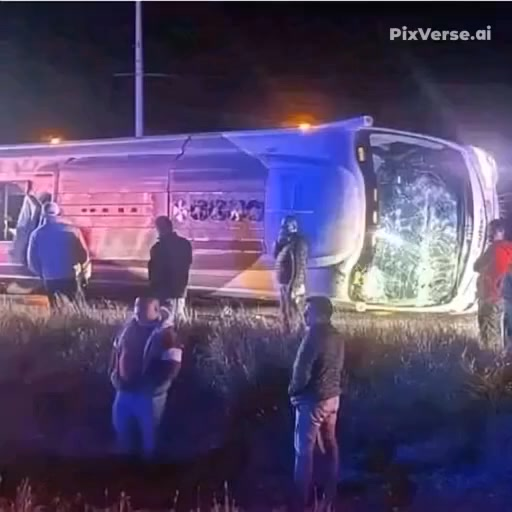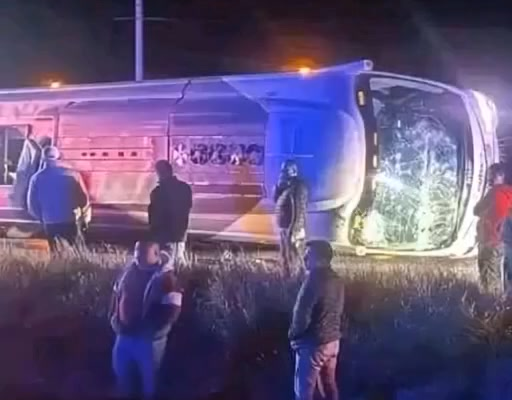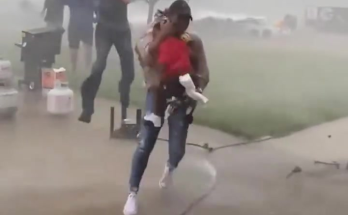A Nation in Shock After Huehuetoca Tragedy
On the morning of November 20, what should have been a routine day of travel for hundreds of commuters turned into one of the darkest days in recent memory for road safety in Mexico. At kilometer 059+000 of the Mexico-Querétaro Highway, near Huehuetoca in the State of Mexico, a deadly pileup involving a trailer and multiple vehicles claimed the lives of 19 people and left dozens more injured.
The collision, described by survivors as sudden and overwhelming, has ignited urgent conversations about highway safety, infrastructure oversight, and the growing risks of heavy traffic corridors that connect Mexico City to its surrounding states.
Families who lost loved ones in the disaster are now grappling with unimaginable grief. Meanwhile, investigators, policymakers, and safety advocates are asking difficult questions: could this tragedy have been prevented, and what changes are needed to ensure it never happens again?
The Moment of Impact
Witnesses recount hearing the screech of brakes followed by a deafening crash. Within seconds, the busy highway transformed into a chaotic scene as vehicles collided in a chain reaction. The trailer involved in the accident reportedly failed to stop in time, plowing into cars ahead before coming to rest across all three north-south lanes.
The wreckage blocked traffic in both directions, paralyzing one of Mexico’s most important highways and leaving thousands of travelers stranded for hours. Emergency services rushed to the site, with firefighters, paramedics, and police working tirelessly to extract victims from the tangled remains of vehicles.
Despite their efforts, the scale of the disaster was overwhelming. For families awaiting word of their loved ones, the uncertainty was unbearable. In hospitals across the region, doctors and nurses cared for the injured, while the nation watched in shock as news outlets reported on the scope of the tragedy.
Investigators Seek Answers
Authorities immediately launched an investigation to determine the precise cause of the accident. Early reports suggest that the trailer’s brakes may have failed, but other possibilities are being considered, including driver fatigue, human error, or improper vehicle maintenance.
Traffic accidents involving heavy trucks are not uncommon in Mexico, and experts warn that a combination of factors often contributes to such devastating outcomes. The condition of highways, the enforcement of safety regulations, and the pressure placed on commercial drivers all play significant roles.
Investigators are examining whether the trailer had undergone recent inspections and if safety protocols were followed. Mechanical failures, such as brake malfunctions, can occur, but in many cases, they are preventable with proper maintenance.
For now, officials are cautious about drawing conclusions, but the questions being asked underscore a broader problem: how safe are Mexico’s busiest roadways, and are existing regulations enough to protect travelers?
A Highway Under Pressure
The Mexico-Querétaro Highway is one of the country’s most heavily used roadways. Stretching from Mexico City toward the industrial and commercial hubs of Querétaro and beyond, it serves as a critical artery for passenger travel and freight transport alike.
Every day, thousands of vehicles—including passenger cars, buses, and large trailers—navigate the congested highway. The mix of heavy trucks and smaller vehicles creates conditions where even minor errors can lead to catastrophic consequences.
According to the Mexican National Institute of Statistics and Geography (INEGI), traffic accidents are one of the leading causes of injury and death in the country. Highways like the Mexico-Querétaro, which handle massive volumes of freight transportation, are especially prone to pileups when heavy vehicles are involved.
This tragic event in Huehuetoca highlights not only the risks of high-density traffic but also the immense responsibility borne by drivers and transportation companies to uphold safety standards.
Families Caught in the Aftermath
For the families affected, November 20 will forever mark the day their lives were altered beyond recognition. Many had simply been heading to work, school, or family gatherings when tragedy struck.
Scenes at hospitals and morgues reflected the heartbreak of parents, siblings, and children struggling to comprehend their loss. Some families traveled from distant towns to identify loved ones, while others anxiously awaited updates about relatives who remained hospitalized with serious injuries.
Grief counselors and local officials have stepped in to provide psychological and financial support to victims’ families. Yet, no assistance can erase the pain of lives cut short or the memories of a journey that ended in disaster.
Broader Implications for Road Safety
While the Huehuetoca crash is devastating in its own right, it also draws attention to systemic challenges in Mexico’s transportation system.
- Driver Fatigue and Work Pressure
Commercial truck drivers often face long shifts and tight delivery deadlines. Fatigue impairs judgment and slows reaction times, making accidents more likely. - Vehicle Maintenance and Oversight
Regular inspections are crucial, but enforcement is inconsistent. Critics argue that some companies cut corners to save costs, putting lives at risk. - Highway Infrastructure
Certain stretches of Mexico’s highways are not equipped to handle the increasing traffic volume. Narrow lanes, insufficient emergency exits, and poor lighting exacerbate the dangers. - Emergency Preparedness
The speed at which emergency responders arrived at Huehuetoca was commendable, but the incident revealed how unprepared even major highways can be for large-scale disasters.
These issues raise urgent questions for policymakers. Should safety regulations be tightened? Are stricter penalties needed for companies that neglect maintenance standards? And how can Mexico balance economic growth with the need to protect its citizens on the road?
Lessons From Past Tragedies
Sadly, this is not the first time Mexico has faced such a devastating highway accident. In previous years, similar collisions involving large trailers have caused significant casualties. Each time, the nation mourns, promises are made, and debates resurface about improving road safety.
Some experts suggest looking to international models. Countries with advanced freight transport systems often enforce mandatory rest periods for drivers, conduct surprise vehicle inspections, and invest heavily in highway infrastructure.
By adopting similar practices, Mexico could reduce the likelihood of future tragedies. But such changes require political will, industry cooperation, and public support.
Public Outcry and Calls for Reform
In the days following the Huehuetoca pileup, public reaction has been intense. Social media platforms have filled with messages of grief, frustration, and anger. Many Mexicans argue that road safety has long been neglected and that stronger action is overdue.
Activists are calling for:
- Increased investment in highway infrastructure.
- Stricter enforcement of vehicle safety standards.
- Better training and regulation for commercial drivers.
- More frequent roadside inspections.
Lawmakers face growing pressure to respond decisively. While the investigation continues, the public is demanding not only answers but also concrete reforms that will prevent history from repeating itself.
A Nation Reflects
The Huehuetoca crash serves as a sobering reminder of how fragile life can be. For the victims, their final moments were spent on a highway many travel every day without a second thought. For survivors, the trauma will linger long after the physical wounds have healed.
As Mexico reflects on this tragedy, the broader lesson is clear: road safety cannot be taken for granted. Every driver, company, and policymaker has a role to play in ensuring that highways are not sites of preventable loss.
Moving Forward
The path to safer roads is not simple, but it begins with acknowledging the problem. Each tragedy is an opportunity to learn, adapt, and make changes that save lives. Whether through stricter enforcement of safety laws, better infrastructure, or a cultural shift toward responsible driving, progress is possible.
For now, the Mexico-Querétaro Highway stands as both a symbol of national connectivity and a reminder of the risks inherent in modern transportation. The challenge ahead is to ensure that future journeys are safer, more secure, and free from preventable tragedy.
Conclusion
The November 20 pileup in Huehuetoca is more than just an isolated accident—it is a national wake-up call. The 19 lives lost and dozens more altered forever represent not only personal tragedies but also a collective failure to fully address Mexico’s road safety crisis.
As investigators work to uncover the exact cause, and as families mourn, the broader question remains: will this tragedy lead to meaningful change?
Only time will tell. But for now, the Mexico-Querétaro Highway is a haunting reminder of how quickly routine travel can turn into catastrophe—and why urgent action is needed to protect the millions of people who rely on these roads every day.




